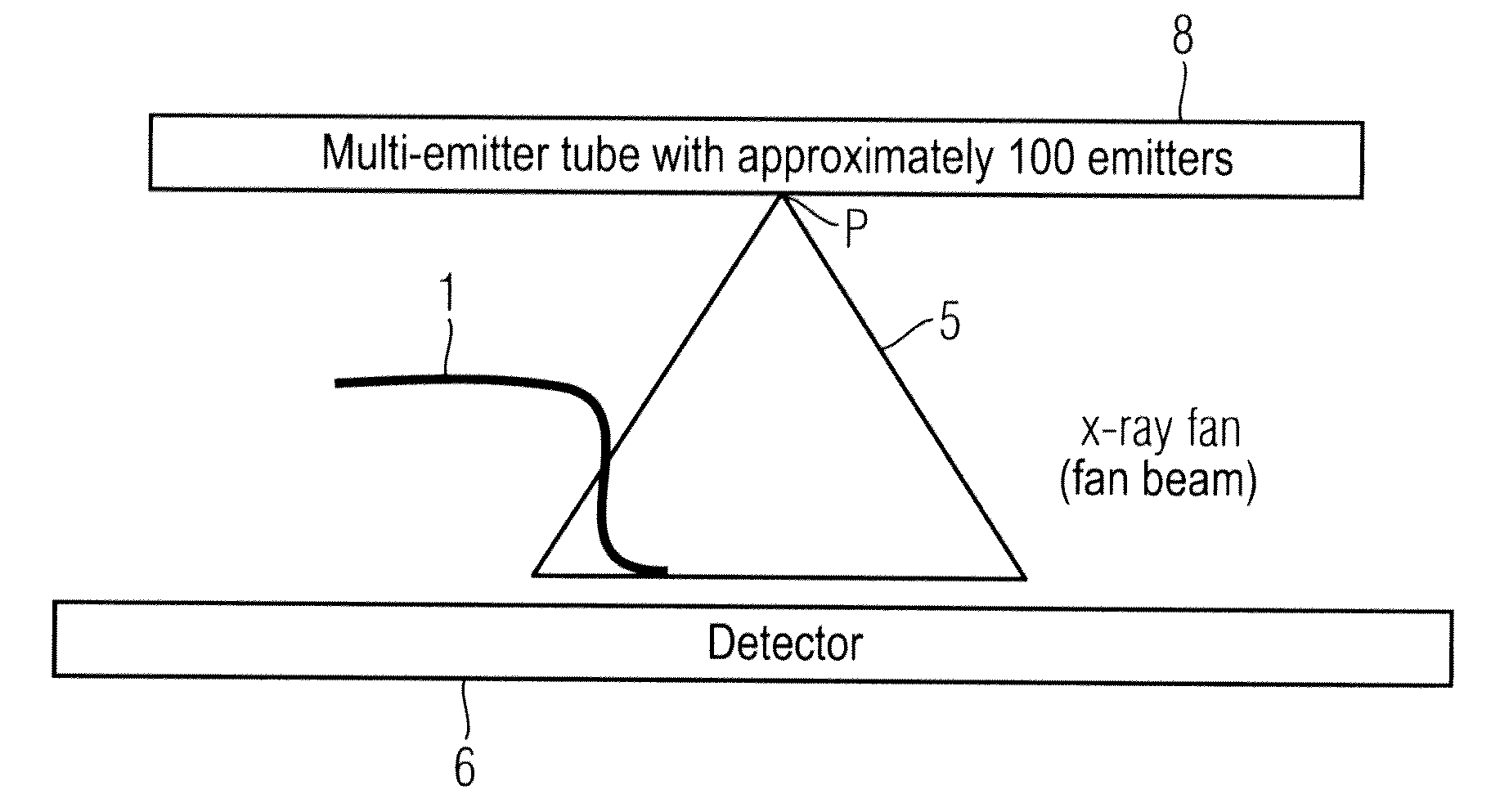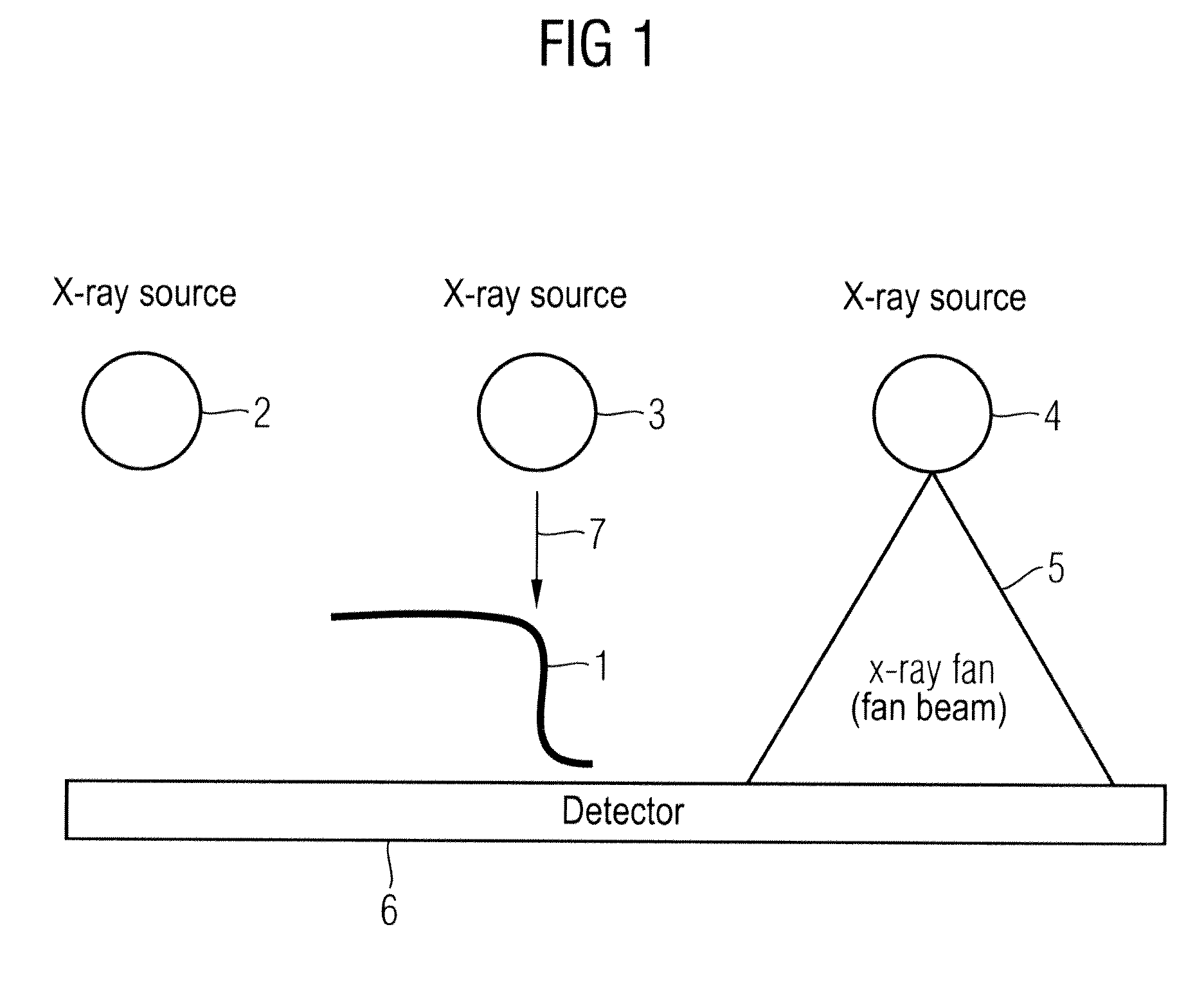Device and method for x-ray examination of an object for material defects by means of x-rays
- Summary
- Abstract
- Description
- Claims
- Application Information
AI Technical Summary
Benefits of technology
Problems solved by technology
Method used
Image
Examples
Embodiment Construction
[0031]A segment of an object 1 that is to be tested is shown in FIG. 1. It is thereby a metal component, for example, that should be used in a vehicle. This is moved in the z-direction, i.e. into the plane of the drawing (by means of a conveyor belt that is not drawn, for example) and thereby exposed with test radiation. In the conventional system shown in FIG. 1, three conventional x-ray sources 2 through 4 are used for the testing of objects. These x-ray sources 2 through 4 generate an x-ray beam 5 which is, for example, a fan beam. In x-ray acquisitions, x-ray radiation transmitted through the object 1 to be tested is received by a detector 6. In this manner, projections are thus obtained that allow conclusions about the material properties of the object 1.
[0032]Conventional x-ray tubes as used in FIG. 1 essentially include a vacuum chamber with housing in which a cathode and an anode are enclosed. The cathode thereby acts as a negative led that emits electrons to the positive an...
PUM
 Login to View More
Login to View More Abstract
Description
Claims
Application Information
 Login to View More
Login to View More - R&D
- Intellectual Property
- Life Sciences
- Materials
- Tech Scout
- Unparalleled Data Quality
- Higher Quality Content
- 60% Fewer Hallucinations
Browse by: Latest US Patents, China's latest patents, Technical Efficacy Thesaurus, Application Domain, Technology Topic, Popular Technical Reports.
© 2025 PatSnap. All rights reserved.Legal|Privacy policy|Modern Slavery Act Transparency Statement|Sitemap|About US| Contact US: help@patsnap.com



